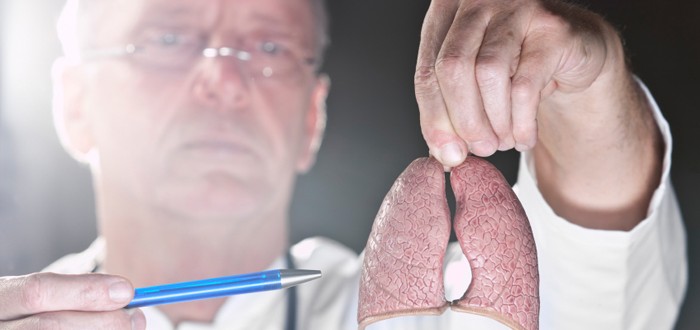These days, with a computer and a 3-D printer you can manufacture at home all kinds of things — shoes, toys, equipment and even a handgun that shoots real bullets.
What you cannot make is a pair of mesothelioma-free human lungs. Yet.
At this very moment, scientists are striving to add to the growing list of 3-D printable goods a set of real-life, fully functioning lungs. Minus the mesothelioma, of course.
If they accomplish that, the next thing they may be able to 3-D manufacture is a working copy of cancer-free human pleura.
For you, that would mean the possibility of being able to trade in the old, mesothelioma-blanketed lining of your lungs or abdomen for a brand-new duplicate.
As a bonus, the copy would be 3-D printed using material culled from your own healthy cells, so there would be little chance of your body rejecting the substitute organ or tissue once implanted.
3-D Printed Mesothelioma-Free Tissue Is a Boon
The possibilities of fabricating mesothelioma-free living tissue and turning it into replacement parts via the 3-D printing process were explored in an issue of the Massachusetts Institute of Technology Review.
The journal started its report by explaining why scientists want to be able to 3-D print lungs and other organs. The most important reason offered was that there are a lot of people who need lung transplants but not anywhere near enough donors to meet the demand.
Being able to print out organs would not only erase the deficit but would eliminate the need for donors at all.
At this point, scientists are able to 3-D print a bio-structure that is a dead-ringer for a lung, except that it doesn’t function. But it would if the structure were equipped with a vasculature – a network of tiny passages through which blood could flow.
This is the big hurdle the scientists must surmount.
Building a 3-D Organ
When scientists use 3-D to print an organ, they start off with a scaffold. This is basically a printed frame upon which cell material is overlaid.
The process of overlaying the scaffold is virtually identical to the process your home or office inkjet printer uses to apply ink to paper.
The difference is that instead of colored chemical ink, the 3-D bio-printers use bio-ink consisting of living cells.
The bio-inkjet head makes a pass over the scaffold and deposits a fine layer of cells. Then it makes another pass and deposits another layer on top of the first.
Then the inkjet head makes a pass to lay down a third layer, and on and on until the organ acquires the correct shape and dimensions.
Cells Die from Asphyxiation or Self-Poisoning
Sadly, because there is no vasculature, the cells at the bottom have no way to get the oxygen they need to sustain themselves. They also have no way to get rid of the waste products they create in the course of performing their cellular functions.
As a result, the bottom layers of cells asphyxiate — if they don’t die first of self-poisoning. Either way, only the layer of cells at or near the top can survive.
So the 3-D printed organ is useless in this form. That is the reason why scientists are trying to incorporate vasculature into their 3-D printed organs.
Ongoing 3-D Organ Creation Efforts
Harvard has made some progress on this front and, last year began printing tissues laced with blood vessels. But this is so primitive right now that it can only be used as a test platform to find out whether potential new drugs would be chemically toxic to living tissues exposed to them.
As Harvard and other universities refine and further their vasculature-printing prowess, they will next try to apply the techniques to the 3-D printing of organ components — an intermediary step between where the science is now and where researchers hope it will go.
One Harvard researcher compared all this to the challenge of putting a man on the moon — a scientific endeavor that is incredibly complex, costly and hyper-ambitious. But wholly worthwhile if it succeeds.

